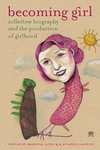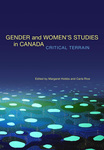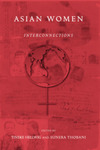We don’t actively support Internet Explorer
It appears that you are using Internet Explorer, which has been discontinued by Microsoft. Support has ended for versions older than 11, and as a result you may face security issues and other problems when using it.
We recommend upgrading to a newer browser such as Firefox, Google Chrome, or Edge for a much better experience across the web.
While this site may work with Explorer, we are not testing and verifying it, so you may run into some trouble or strange looking things.
Overview
Faced with an increasingly diverse student population, an expanding field of gender scholarship, and an academic emphasis on multidisciplinarity, social science professors often struggle to address and integrate such a broad array of gender issues in their courses. This book addresses that challenge by increasing students' understandings of gender relations in multiple social fields across time and space.
Gender Relations in Global Perspective is truly multidisciplinary. It is partially drawn from the work of sociologists, but articles written by gender scholars from the disciplines of cultural studies, history, political science, geography, and literary theory are also included. The readings examine historically persistent, cross-culturally relevant, and empirically grounded concerns such as men's position in the family and women's relationship to work, media, and the global economy, as well as the gendered problems of violence, sexuality and reproduction, and racism.
This book presents an engaging range of comparative and cross-cultural gender analyses from various world regions, including the Middle East, South Asia, South East Asia, Europe, the Americas, and Africa. As the articles are dialogically situated in this text, readers will be able to analyse gender similarities and differences around the globe and learn about the diversity of gender experiences across cultures and regions. This range of analyses demonstrates how a global perspective enriches feminist analyses.
Students will quickly learn that to investigate gender dynamics adequately, attention must be paid simultaneously to the processes of racialization, class, colonialism and imperalism, and sexuality that interweave with gender to produce complex forms of oppression.
Table of Contents
PrefaceIntroductionPart I: Historical PerspectivesChapter 1: The Domestic Sphere of Women and the Public World of Men: The Strengths and Limitations of an Anthropological Dichotomy – Louise LamphereChapter 2: "Introduction" to More Than a Labour of Love: Three Generations of Women’s Work in the Home – Meg LuxtonChapter 3: Dueling Dualisms – Anne Fausto-SterlingChapter 4: The Give Away – Leslie FeinbergPart II: Theory and the Social Construction of GenderChapter 5: Feminist Theories – Roberta HamiltonChapter 6: Doing Gender – Candace West and Don H. ZimmermanChapter 7: Masculinity as Homophobia: Fear, Shame, and Silence in the Construction of Gender Identity – Michael S. KimmelChapter 8: Introduction: Acting in Concert – Judith ButlerPart III: The Gendered FamilyChapter 9: "It’s Almost Like I Have a Job, But I Don’t Get Paid": Fathers at Home Reconfiguring Work, Care, and Masculinity – Andrea DoucetChapter 10: Beyond Diversity: Exploring the Ways in Which the Discourse of Race Has Shaped the Institution of the Nuclear Family – Enakshi DuaPart IV: Gendered BodiesChapter 11: A History of Women’s Bodies – Rose WeitzChapter 12: Measuring Up to Barbie: Ideals of the Feminine Body in Popular Culture – Jacqueline Urla and Alan C. SwedlundChapter 13: Size 6: The Western Women’s Harem – Fatima MernissiChapter 14: Globalization and the Inequality of Women with Disabilities – Fiona SampsonChapter 15: Pills and Power Tools – Susan BordoPart V: Gendered ViolenceChapter 16: The Myth of Sexual Symmetry in Marital Violence – Russell P. Dobash, R. Emerson Dobash, Margo Wilson, and Martin DalyChapter 17: Violence against Refugee Women: Gender Oppression, Canadian Policy, and the International Struggle for Human Rights – Helene MoussaPart VI: The Gendered ClassroomChapter 18: The Right Stuff: Fashioning an Identity through Clothing in a Junior School – Jon SwainChapter 19: “Spice Girls,” “Nice Girls,” “Girlies,” and “Tomboys”: Gender Discourses, Girls’ Cultures, and Femininities in the Primary Classroom – Diane ReayPart VII: The Gendered WorkplaceChapter 20: The Care Crisis in the Philippines: Children and Transnational Families in the New Global Economy –
Rhacel Salazar ParreñasPart VIII: Gender and the MediaChapter 21: ’Cuz the Black Chick Always Gets It First: Dynamics of Race in Buffy the Vampire Slayer – Candra K. GillChapter 22: Publicity Traps: Television Talk Shows and Lesbian, Gay, Bisexual, and Transgender Visibility – Joshua GamsonPart IX: The Gendered StateChapter 23: The Discursive Constitution of Pakistani Women: The Articulation of Gender, Nation, and Islam – Nancy CookChapter 24: Geography Lessons: On Being an Insider/Outsider to the Canadian Nation – Himani BannerjiPart X: Gender, Race, and RacismChapter 25: Racism, Women’s Health, and Reproductive Freedom – Carolyn Egan and Linda GardnerChapter 26: Writing Sex, Writing Difference: Creating the Master Text on the Hottentot Venus – Denean Sharpley-WhitingPart XI: Gender, Imperialism, and GlobalizationChapter 27: The Female Gaze: Encounters in the Zenana – Indira GhoseChapter 28: Marginalization, Islamism, and the Production of the “Other’s” “Other” – Robina MohammadChapter 29: Is Local:Global as Feminine:Masculine? Rethinking the Gender of Globalization – Carla FreemanChapter 30: Globalization, Gender, and the Davos Man – Lourdes BeneríaChapter 31: Globalization and Its Mal(e)contents: The Gendered Moral and Political Economy of Terrorism – Michael S. Kimmel













